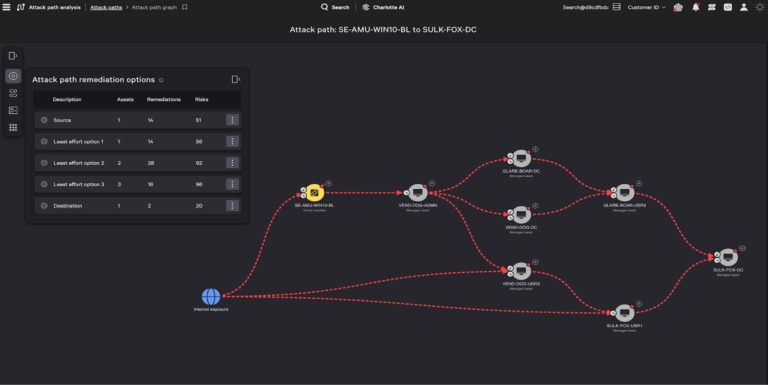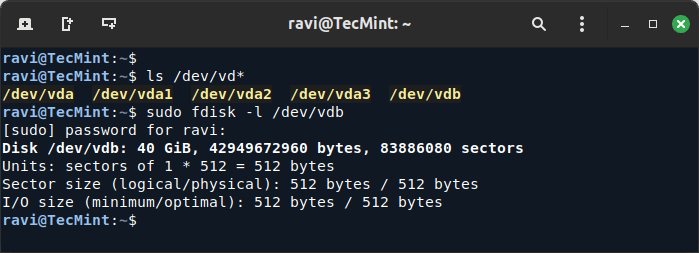Since diagrams such as networks, organizational structures, system architectures, workflows, etc., have become an indispensable part of both technical and managerial work, we come to the conclusion that, in fact, information visualization is becoming even more important these days. Therefore, if you use Linux, we understand very well that choosing the best diagram viewer is key to your productivity while working.
So to help you out, in this article, we will explore the best and most efficient options for diagram viewing on Linux in 2025. Ultimately, the choice is yours.
1. ONLYOFFICE Diagram Viewer
In fact, it is worth mentioning that ONLYOFFICE Diagram Viewer is part of ONLYOFFICE Docs, which is an open-source productivity suite that includes applications for creating and editing text documents, spreadsheets, presentations, and PDF files, offering real-time collaboration functionality.
ONLYOFFICE Diagram Viewer is nothing more than a powerful component of ONLYOFFICE Docs that allows users to view diagram files in .vsdx format, without conversion issues, and on web, desktop, and mobile web platforms.
This viewer is suitable for:
- Project and process management that includes BPMN, UML, and Gantt diagrams.
- Flowcharts and ERDs for database structures.
- System architecture and network visualization.
- Technical documentation.
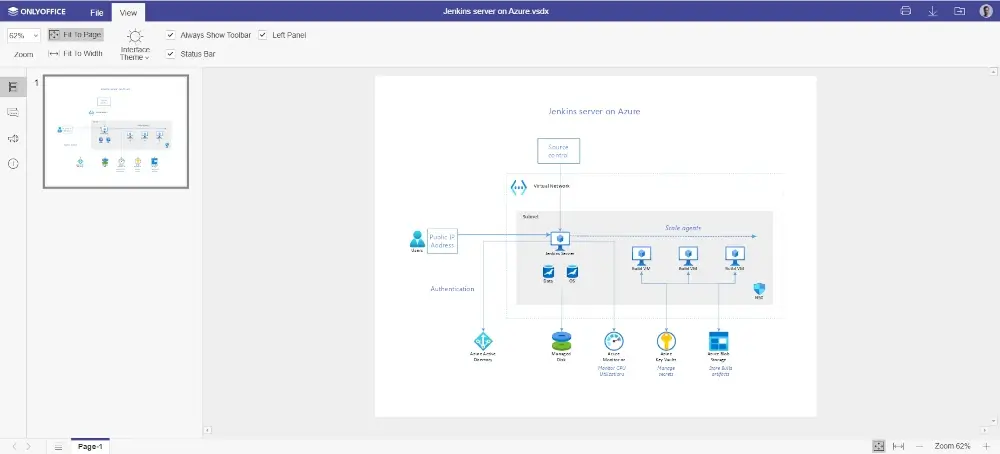
Also, ONLYOFFICE Diagram Viewer, which comes with a highly intuitive interface and is not at all similar to any of the other options on the market, enjoys full integration with platforms such as Nextcloud, ownCloud, Redmine, Odoo, etc., as part of the ONLYOFFICE Docs suite.
But the strongest point of this tool lies precisely in the fact that it is very suitable for both individual users and teams working in a cloud environment or a self-hosted server.
Therefore, this diagram viewer is a very good solution for both organizations and users looking for a centralized and secure solution for visualization and collaboration on diagrams.
Last but not least, ONLYOFFICE Docs also offers integrated and advanced support for visualization and, of course, diagram editing through an official Draw.io plugin, thus becoming the optimal choice for those users who require full integration with documents and collaborative work on Linux.
The Draw.io plugin also serves as a highly advanced additional tool for creating and manipulating diagrams, as it achieves this directly within the document editing environment.
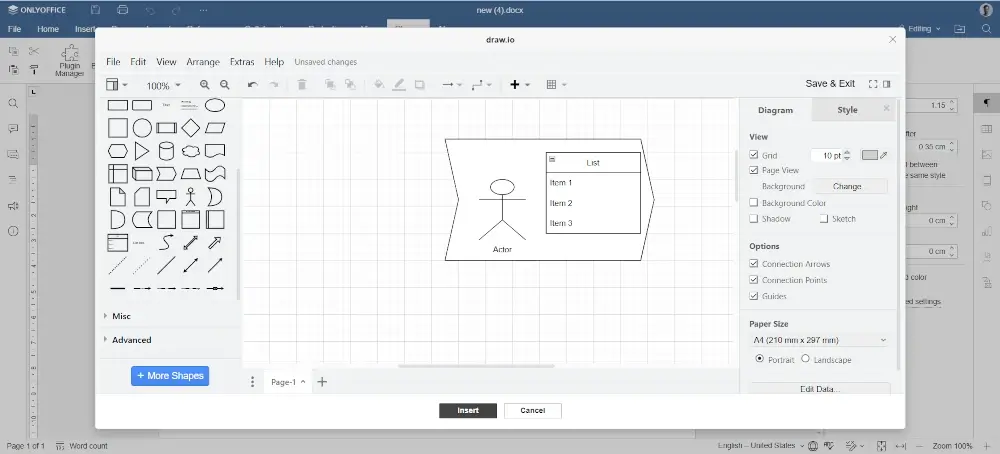
2. diagrams.net (Draw.io)
Of course, we cannot leave out Draw.io, which is one of the most popular tools for creating and opening diagrams. To make things easier for Linux users, Draw.io comes with a desktop version, and this works through Electron.
Thus giving users the opportunity to work even when they do not have access to the Internet, but even though it already has an application version for Linux users, we cannot leave out mentioning that it is actually best known as a web application.
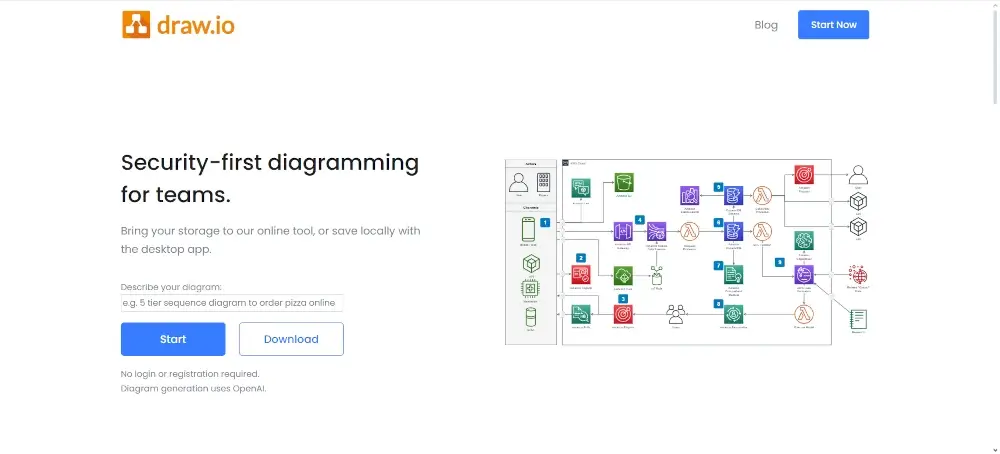
Draw.io is a very powerful tool that offers a very wide range of ready-made templates for a series of diagram types, including UML, network diagrams, flowcharts, and many others. Of course, Draw.io has also thought about exporting these works, as it offers extremely good support for various formats such as PDF, PNG, and SVG.
Meanwhile, Draw.io’s excellent synchronization with cloud platforms such as Google Drive, OneDrive, Nextcloud, and Dropbox makes it possible to securely store and easily access your projects from any device possible, thus not limiting you to just one device.
3. LibreOffice Draw
LibreOffice Draw offers advanced options for creating and editing diagrams and is part of the open source LibreOffice package, but what differentiates this viewer from other diagram viewers is that it does not have any support for .drawio, but it is quite good for creating and managing technical diagrams that are created within the LibreOffice ecosystem.
It offers precise control over the positioning of objects as well as technical processing through numerous grids and guides. It also offers numerous export format options such as SVG, PNG, EMF, EPS, and many more.

But of course, along with all this, LibreOffice has some limitations, such as the lack of real-time collaboration, the lack of ready-made templates or the lack of integration with modern cloud tools.
Therefore, it is worth mentioning that LibreOffice Draw is actually for those traditional users when it comes to drawing, but who are very familiar with LibreOffice.
4. yEd Graph Editor
yEd is a free graphics editor developed by the company yWorks, which allows the creation and editing of complex, structured diagrams in the most efficient way, and this is achieved thanks to extremely advanced algorithms for automatic layout.
The yEd Editor has a wide range of uses and is mainly used for flowcharts, hierarchical and graph-oriented diagrams, as well as for structuring data visually.
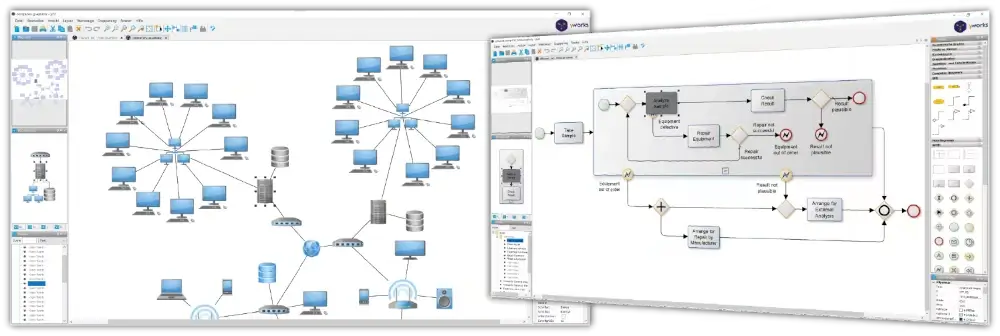
The smart layout function that this editor has allows users to save time and improve the visual arrangement of content, as it allows them to create advanced and quite complicated diagrams, and this is mostly after manual intervention. It is also worth mentioning that it is available on all major desktop platforms.
But yED Graph Editor, like everything else, has its limitations, which are:
- It does not support real-time collaboration.
- It is not open source software.
- Its interface is quite technical for beginners.
However, it remains a very good solution for all those looking for a tool that offers automatic and accurate construction of technical or structural diagrams.
5. Inkscape (for more artistic diagrams)
For all those who do not know Inkscape, it is a very powerful tool for very advanced visual creations, especially for diagrams designed with graphic precision.
And while it’s unfortunately not specifically a diagram viewer, Inkscape offers endless creative freedom for all the creators out there who don’t like to be limited in their creativity.
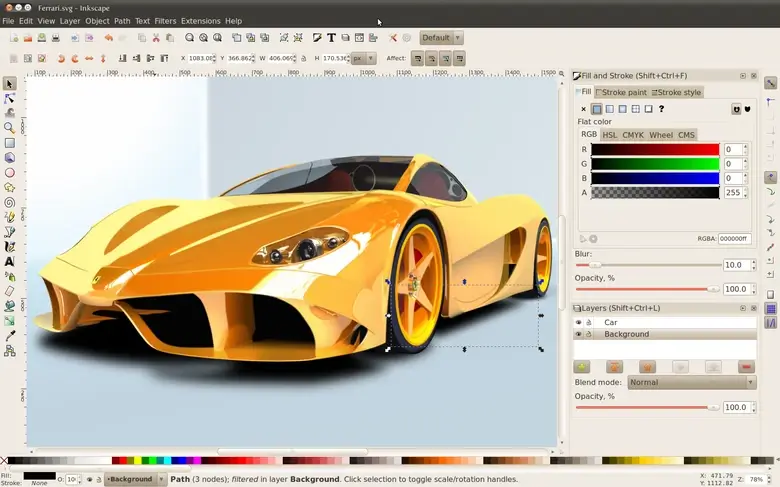
It’s the ideal choice for those who do graphic design, technical illustration, or visual creativity, as it’s very good at creating diagrams that really require a lot of visual precision.
Inscape has some limitations since it is not a tool specifically for creating diagrams, as mentioned above, but we will mention only a few of them:
- There is no support for
.draw.ioor.vsdxformats. - It requires more time and experience to use.
- It is not a specific program for creating diagrams.
We really hope that through this article, we have helped you at least a little to make your best choice for a diagram viewer. Choose the best one for you.



